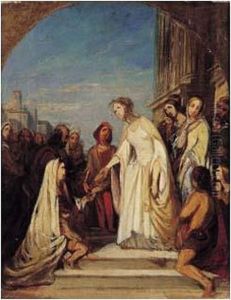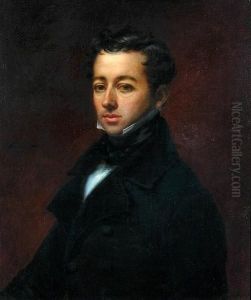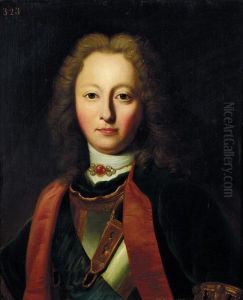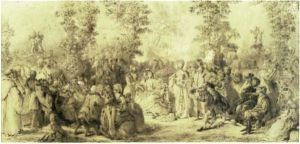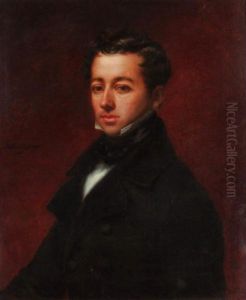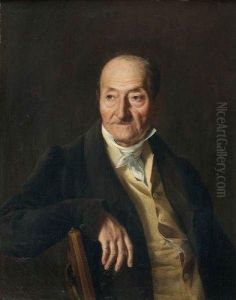Jacques Joseph Lecurieux Paintings
Jacques Joseph Lecurieux, born in 1814 and passing away in 1894, was a French artist whose contributions to the art world, though not as widely recognized as those of his contemporaries, hold significant value within the study of 19th-century French art. His life and work are emblematic of the period's artistic movements, reflecting the transitions and cultural shifts of his time. Lecurieux's journey through the art world was marked by his dedication to mastering his craft and his ability to adapt to the changing tastes and artistic trends of the 19th century.
Lecurieux's early years were spent in an era dominated by the Romantic movement, which prized emotion and individualism, a reaction against the rationalism of the Enlightenment and the classical norms of the 18th century. It is within this context that he began his artistic training, likely absorbing the lessons of Romanticism's leading figures. However, as he matured as an artist, the tides of art were turning towards Realism, a movement that sought to depict subjects as they were, often focusing on the everyday lives of people, rather than idealized or dramatized scenes. Lecurieux's body of work exhibits this shift; his early pieces display the dramatic flair of Romanticism, while his later works lean towards the more observant and meticulous approach characteristic of Realism.
Despite the lack of extensive documentation on Lecurieux's personal life or specific anecdotes detailing his interactions with the art community of his time, it is clear that he was a productive artist, contributing to the vibrant art scene in France. He would have been a contemporary of artists like Eugène Delacroix, a leading figure of the Romantic movement, and later, Gustave Courbet, a pivotal player in the Realism movement. While Lecurieux may not have achieved the same level of fame as these artists, his work provides a valuable insight into the evolving aesthetic sensibilities of the 19th century.
Lecurieux's artistic legacy, though modest in comparison to his more renowned peers, is preserved in various French art collections and occasionally features in exhibitions focusing on this dynamic period of art history. His paintings, often characterized by their attention to detail and the emotional depth of their subjects, offer a window into the world of 19th-century France, capturing the spirit of an era that was marked by revolutionary changes not only in the political and social spheres but in the realm of art as well.
In summary, Jacques Joseph Lecurieux was an artist whose life and work were deeply intertwined with the major artistic movements of his time. Through his art, he navigated the transition from Romanticism to Realism, capturing the essence of 19th-century French society. Though he may not be a household name, his contributions to the art world continue to offer valuable perspectives on this transformative period in art history.
